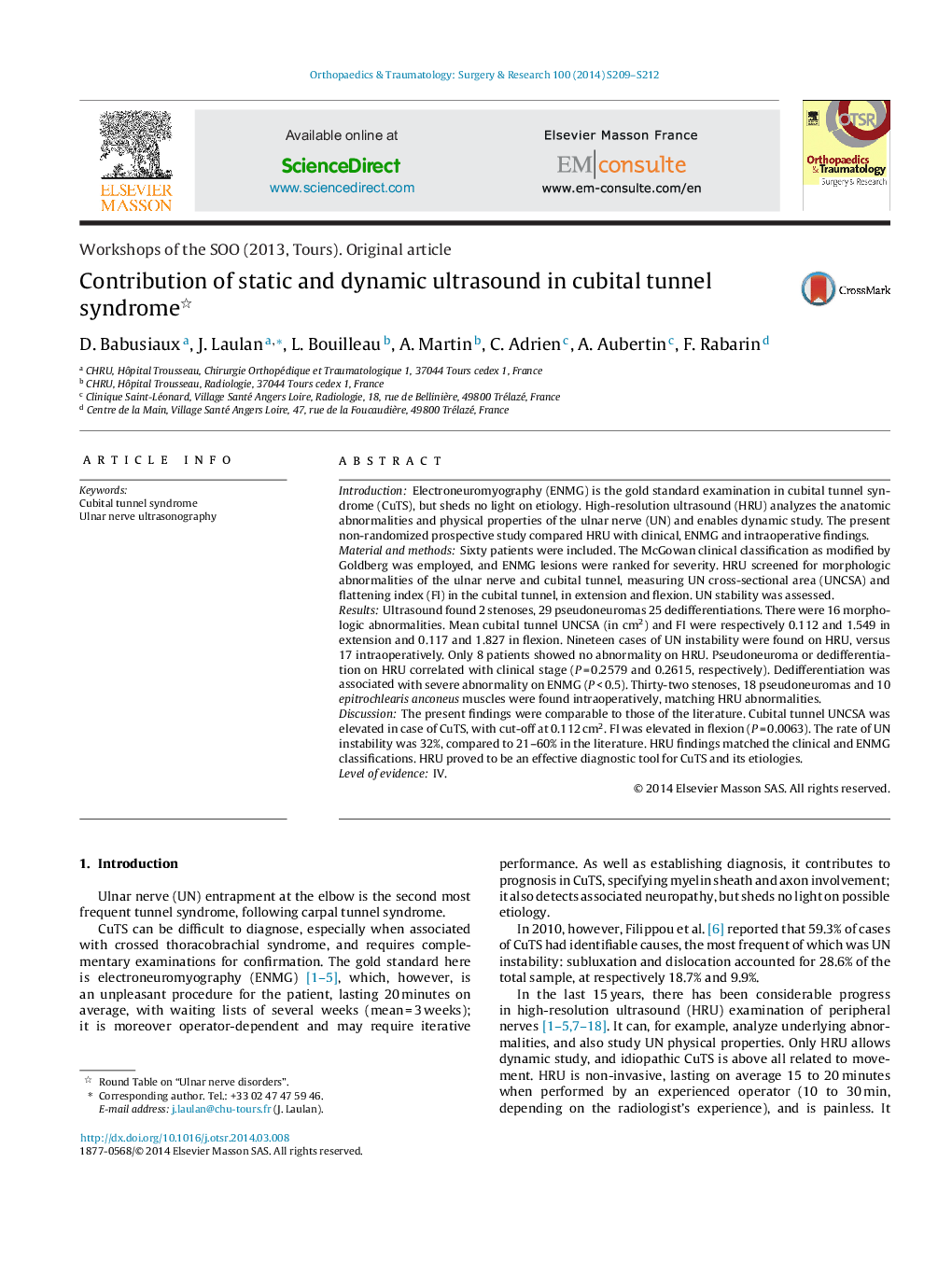| کد مقاله | کد نشریه | سال انتشار | مقاله انگلیسی | نسخه تمام متن |
|---|---|---|---|---|
| 4081322 | 1267588 | 2014 | 4 صفحه PDF | دانلود رایگان |

IntroductionElectroneuromyography (ENMG) is the gold standard examination in cubital tunnel syndrome (CuTS), but sheds no light on etiology. High-resolution ultrasound (HRU) analyzes the anatomic abnormalities and physical properties of the ulnar nerve (UN) and enables dynamic study. The present non-randomized prospective study compared HRU with clinical, ENMG and intraoperative findings.Material and methodsSixty patients were included. The McGowan clinical classification as modified by Goldberg was employed, and ENMG lesions were ranked for severity. HRU screened for morphologic abnormalities of the ulnar nerve and cubital tunnel, measuring UN cross-sectional area (UNCSA) and flattening index (FI) in the cubital tunnel, in extension and flexion. UN stability was assessed.ResultsUltrasound found 2 stenoses, 29 pseudoneuromas 25 dedifferentiations. There were 16 morphologic abnormalities. Mean cubital tunnel UNCSA (in cm2) and FI were respectively 0.112 and 1.549 in extension and 0.117 and 1.827 in flexion. Nineteen cases of UN instability were found on HRU, versus 17 intraoperatively. Only 8 patients showed no abnormality on HRU. Pseudoneuroma or dedifferentiation on HRU correlated with clinical stage (P = 0.2579 and 0.2615, respectively). Dedifferentiation was associated with severe abnormality on ENMG (P < 0.5). Thirty-two stenoses, 18 pseudoneuromas and 10 epitrochlearis anconeus muscles were found intraoperatively, matching HRU abnormalities.DiscussionThe present findings were comparable to those of the literature. Cubital tunnel UNCSA was elevated in case of CuTS, with cut-off at 0.112 cm2. FI was elevated in flexion (P = 0.0063). The rate of UN instability was 32%, compared to 21–60% in the literature. HRU findings matched the clinical and ENMG classifications. HRU proved to be an effective diagnostic tool for CuTS and its etiologies.Level of evidenceIV.
Journal: Orthopaedics & Traumatology: Surgery & Research - Volume 100, Issue 4, Supplement, June 2014, Pages S209–S212